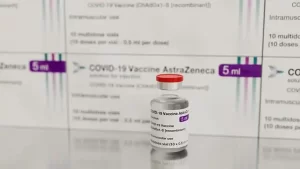Tick-Borne Diseases: A Looming Public Health Threat and Innovative Solutions
- Global First: Bovine Avian Influenza Transmission to Humans Detected
- Potassium-Enriched Salt Substitutes: Reducing Blood Pressure Risk?
- Tritium Detection in Fukushima’s Seawater: Below Safety Standards
- What Reason Let AstraZeneca Withdraws COVID Vaccine From The Market?
- How Many Times Can a Cancer Patient Undergo Chemotherapy?
- What are the WHO recommendations for Japanese encephalitis vaccines?
Tick-Borne Diseases: A Looming Public Health Threat and Innovative Solutions
- AstraZeneca Admits for the First Time that its COVID Vaccine Has Blood Clot Side Effects
- Was COVID virus leaked from the Chinese WIV lab?
- HIV Cure Research: New Study Links Viral DNA Levels to Spontaneous Control
- FDA has mandated a top-level black box warning for all marketed CAR-T therapies
- Can people with high blood pressure eat peanuts?
- What is the difference between dopamine and dobutamine?
- How long can the patient live after heart stent surgery?
Tick-Borne Diseases: A Looming Public Health Threat and Innovative Solutions. Scientists Urge Urgent Action to Dismantle the Public Health “Time Bomb” Ticked by Ticks.
Scientists from Yale University has issued a warning that over the past five decades, diseases spread by ticks have seen a dramatic increase in many regions of the United States, posing a significant threat to public health, necessitating innovative solutions.
In a comprehensive review article, they outline the reasons for such high risks and introduce potential solutions.

Potential solutions include novel vaccines for humans, including one currently under development at Yale University, and even vaccines targeting animals that carry ticks.
This article was recently published in the journal “Science Translational Medicine.”
The research team is led by Associate Professor Sukanya Narasimhan from Yale University’s Department of Internal Medicine (Infectious Diseases), Professor Waldemar Von Zedtwitz from the Department of Medicine (Infectious Diseases), and Professor Erol Fikrig from the Department of Epidemiology (Microbial Diseases) and Microbial Pathogenesis.
Historical Background and Current Situation
They state that the public health threat is rapidly escalating. It was only in 1982 that a tick-borne bacterium causing symptoms similar to arthritis was identified in children in Lyme, Connecticut, leading to an awareness of the tick-borne disease threat. Even then, known cases were exceedingly rare.
Today, an estimated 490,000 people in the United States contract tick-borne diseases like Lyme disease annually. Researchers attribute this growth to the recovery of previously depleted forests and a sharp increase in the population of white-tailed deer, which host parasitic ticks.
Since the causative agent of Lyme disease, the bacterium Borrelia burgdorferi, was identified four decades ago, this threat has also spread from isolated areas near the New England coastline to the American Midwest and other regions. A significant majority of tick-borne diseases in the United States (97%) are caused by one particular tick species, Ixodes scapularis, commonly known as the black-legged tick or deer tick.
Challenges with Multiple Pathogens
Thus far, most efforts to combat tick-borne diseases have focused on developing vaccines against Borrelia burgdorferi, the bacterium responsible for Lyme disease. However, researchers argue that these efforts have had limited success and have proven ineffective against other pathogens transmitted by ticks.
For instance, deer ticks can also transmit six other human pathogens, including the Powassan virus, named after the town where it was first discovered, which can kill 10% of infected individuals and cause permanent neurological damage in half of the cases. Although Powassan virus remains rare, cases have increased 40-fold in the past two decades.
In response to the rapid growth of tick-borne diseases, Fikrig’s laboratory at Yale University is developing a vaccine that works by disrupting the tick’s ability to feed and even alerting the human host when a tick bite occurs, combating various infections.
The first author of the new report, Narasimhan, stated, “If we can prevent ticks from feeding, we can control Lyme disease and other diseases.”
Prior research has indicated that repeated exposure to tick bites increases resistance to tick-borne diseases. Fikrig’s laboratory at Yale University has harnessed this knowledge. In a previous study, the lab found that a vaccine containing a cocktail of tick saliva proteins can reduce tick feeding and increase the likelihood of individuals recognizing they’ve been bitten, which, in turn, prompts the rapid removal of ticks, reducing the risk of infection.
A Broader Vaccine Strategy
Durland Fish, an honorary professor of epidemiology (microbial diseases) at the Yale School of Public Health and co-author of the article, believes that this vaccine could also be delivered through bait consumed by deer. He states, “Deer are the primary host for ticks. Where there are no deer, they don’t exist. I think this should be the Manhattan Project for tick-borne diseases.”
Similar strategies have been employed in the United States to prevent raccoon rabies, in Europe to prevent fox rabies, and to protect cattle from tick-borne diseases.
In summary, the authors assert, “To achieve this goal, we must adopt a multidisciplinary ‘One Health’ approach, a comprehensive approach that balances the health of humans, animals, and ecosystems, leveraging the insights of molecular biologists, entomologists, ecologists, epidemiologists, physicians, veterinarians, and vaccine experts.”
Tick-Borne Diseases: A Looming Public Health Threat and Innovative Solutions
(source:internet, reference only)
Disclaimer of medicaltrend.org
Important Note: The information provided is for informational purposes only and should not be considered as medical advice.



